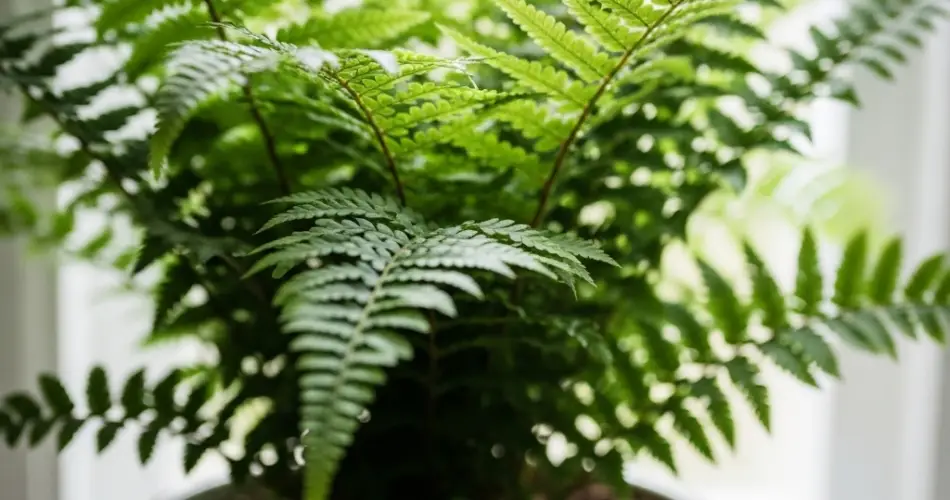Ferns are a classic favorite when it comes to adding lush greenery and soft textures to indoor spaces. Their feathery fronds and rich green color make them a top choice for homes, offices, and shaded patios. When grown in pots, ferns bring elegance and a touch of nature indoors, especially in areas with indirect light. With the right care, they can thrive and create a calming, rainforest-like ambiance in any room.
If you’re considering adding ferns to your indoor plant collection, here’s a complete guide to growing and maintaining them successfully in pots.
1. Choosing the Right Fern Variety
Not all ferns are equal in terms of indoor performance. Some varieties adapt better to container life and indoor conditions than others. When choosing a fern to grow in a pot, consider these popular and manageable varieties:
-
Boston Fern (Nephrolepis exaltata): A classic indoor choice with cascading fronds and a full appearance.
-
Maidenhair Fern (Adiantum): Delicate and elegant, this fern prefers consistent moisture and filtered light.
-
Bird’s Nest Fern (Asplenium nidus): With wavy, glossy fronds, it’s more tolerant of dry indoor air.
-
Button Fern (Pellaea rotundifolia): Compact with small, rounded leaves, ideal for small spaces.
-
Staghorn Fern (Platycerium): An epiphytic variety often mounted but can also grow in shallow pots.
Choose a variety that suits your space and maintenance preferences. Some ferns are more sensitive to humidity and watering routines, while others are more forgiving.
2. Selecting the Right Pot
Ferns require pots that allow for excellent drainage and enough room for their spreading roots.
Pot selection tips:
-
Drainage holes are essential to prevent water from pooling at the bottom.
-
Terracotta or clay pots are great choices because they allow the soil to breathe and prevent waterlogging.
-
Plastic or glazed ceramic pots can retain more moisture—ideal for ferns that require high humidity—but ensure there are holes or use a double-pot system to avoid soggy roots.
Make sure to place a saucer underneath to catch excess water and protect indoor surfaces.
3. The Ideal Soil Mix
Ferns prefer rich, airy, and moisture-retentive soil that doesn’t become compacted over time.
Recommended mix:
-
Two parts peat moss or coco coir
-
One part perlite or coarse sand
-
One part regular potting soil
This blend provides good moisture retention while still allowing excess water to drain. Avoid dense or heavy soils that can hold too much water and suffocate roots.
4. Light Requirements
Most ferns naturally grow on forest floors or tree trunks where they receive dappled light, not direct sun.
-
Place your potted ferns in a spot with bright, indirect light.
-
East- or north-facing windows work best.
-
Avoid harsh afternoon sun which can scorch the fronds.
-
In lower light areas, choose tolerant varieties like the Bird’s Nest Fern or supplement with a grow light if needed.
5. Watering and Humidity Needs
Ferns love humidity and consistent moisture but dislike soggy soil. Finding the right balance is key.
Watering guidelines:
-
Water when the top inch of soil feels slightly dry.
-
Use room-temperature water.
-
Avoid letting the soil completely dry out between waterings.
To boost humidity:
-
Mist your fern regularly with a fine spray bottle.
-
Place the pot on a humidity tray (a shallow tray filled with pebbles and water).
-
Grouping plants together can also raise humidity naturally.
-
In dry climates or air-conditioned rooms, consider using a humidifier nearby.
6. Fertilizing for Growth
Ferns do benefit from feeding during their active growing season (spring and summer), but they don’t require heavy fertilization.
Fertilizing tips:
-
Use a diluted liquid houseplant fertilizer every 4–6 weeks.
-
Avoid overfeeding, which can lead to leaf burn or poor growth.
-
Do not fertilize in fall and winter when the plant is dormant.
7. Pruning and General Maintenance
Maintaining your fern keeps it looking its best and encourages new, healthy growth.
-
Trim yellow or dried-out fronds close to the base using clean scissors.
-
Remove any dead or damaged leaves regularly.
-
Wipe leaves gently with a soft cloth to remove dust.
-
Rotate the pot occasionally to encourage even growth on all sides.
8. Repotting Ferns
Ferns should be repotted every 1–2 years or when you notice roots growing out of the drainage holes.
Steps to repot:
-
Choose a pot 1–2 inches wider than the current one.
-
Gently remove the fern and shake off old soil.
-
Trim any overly tangled or dead roots.
-
Replant in fresh soil, water well, and place in a shady spot for recovery.
9. Common Issues and Fixes
-
Brown leaf tips: Often caused by dry air or inconsistent watering. Increase humidity.
-
Wilting or yellowing leaves: Could be a sign of overwatering or poor drainage.
-
Pest problems (like scale or mealybugs): Wipe leaves with a neem oil solution and isolate the plant if needed.
Conclusion
Growing ferns in pots is a simple and stylish way to bring nature indoors. With the right variety, good light, and a little humidity, your fern can transform your home into a green sanctuary. Whether displayed on a shelf, in a hanging basket, or on a plant stand, a healthy fern offers timeless elegance and a lush, soothing vibe.



